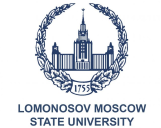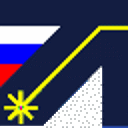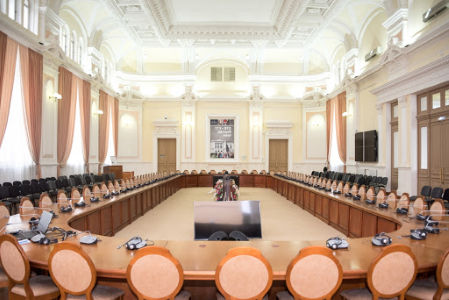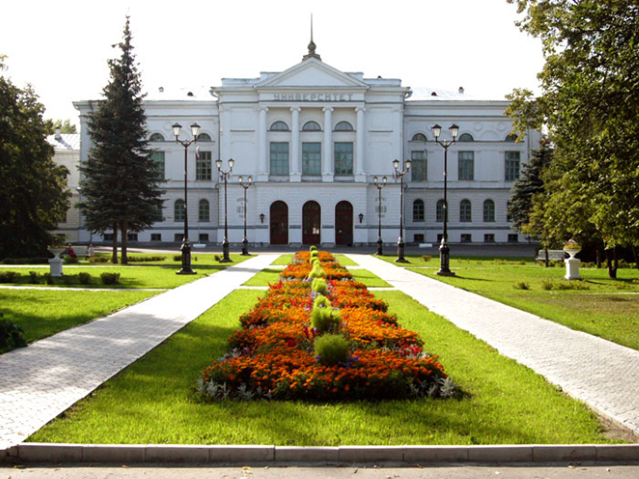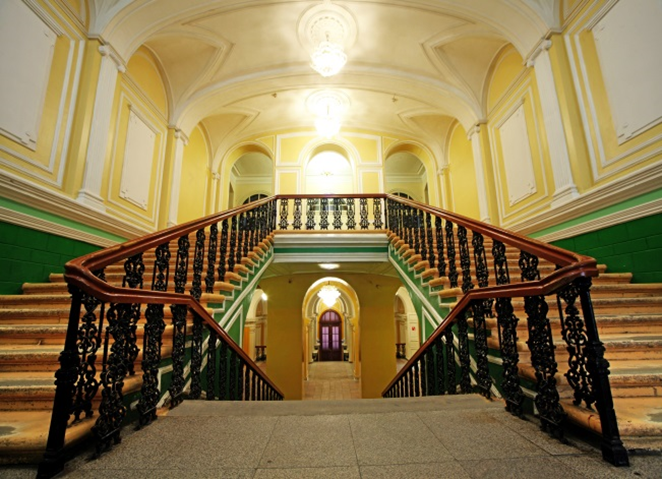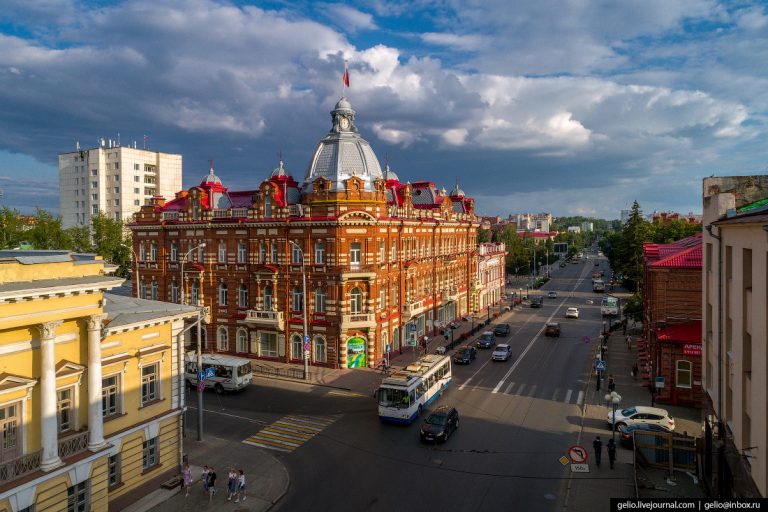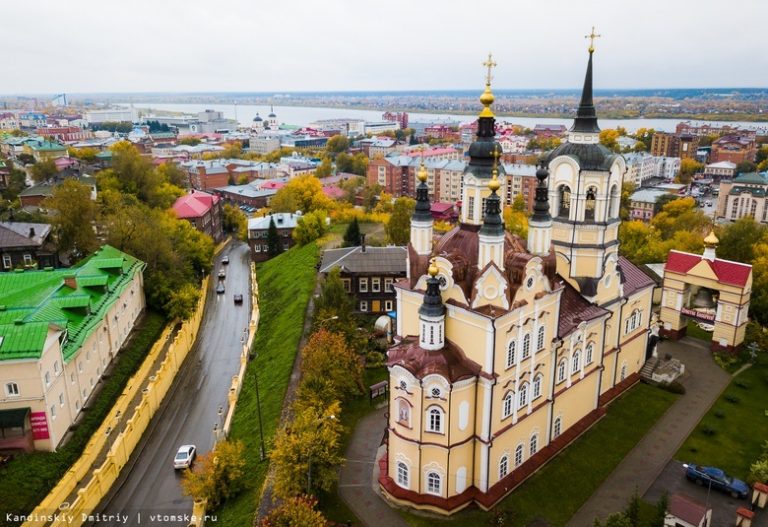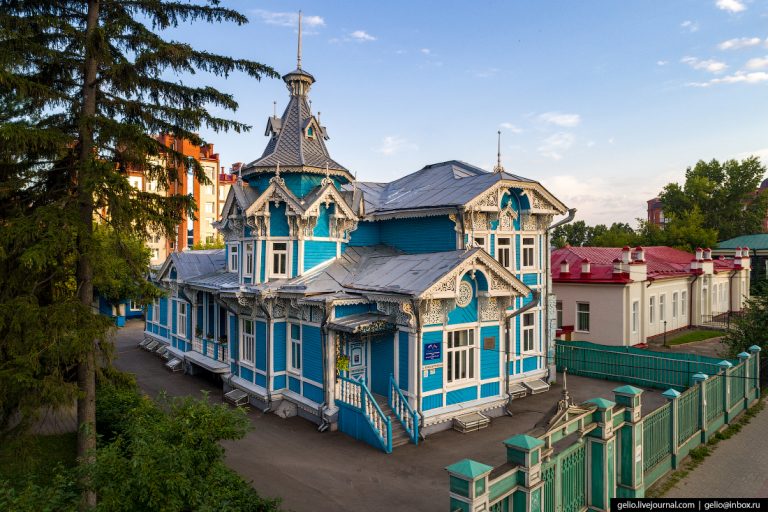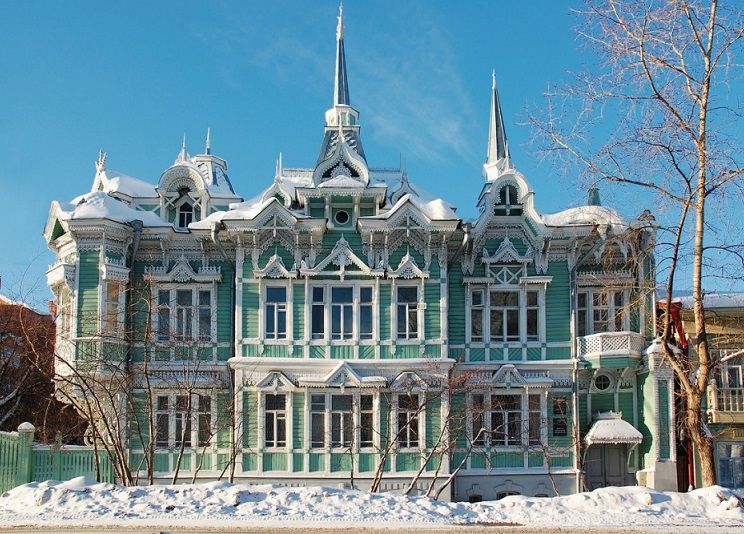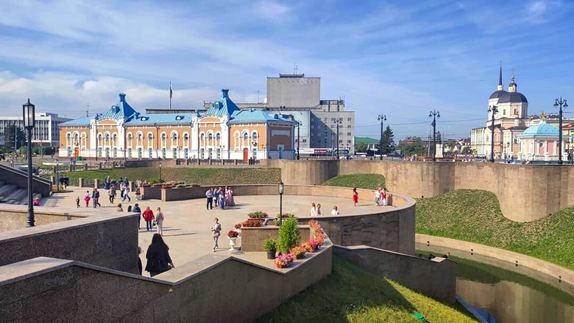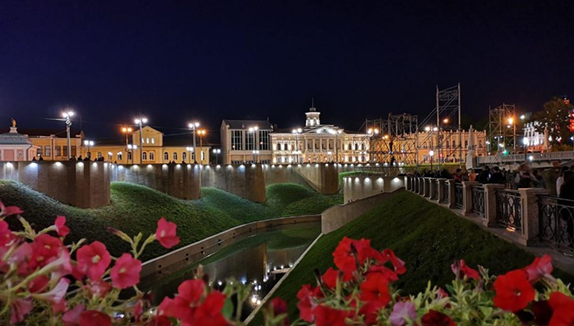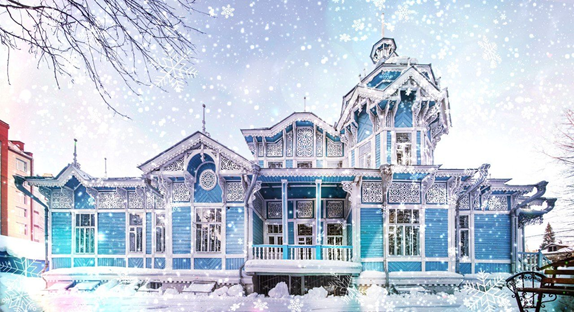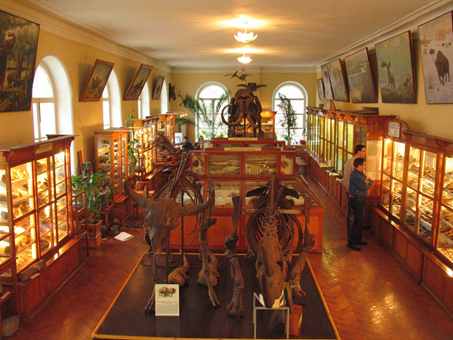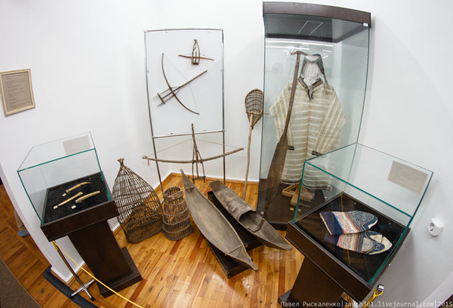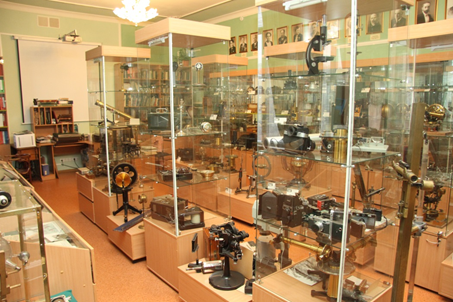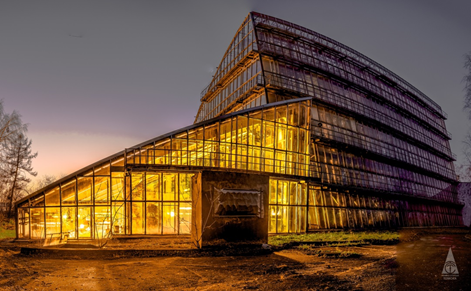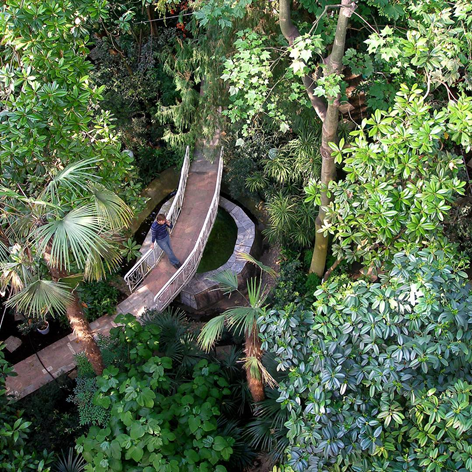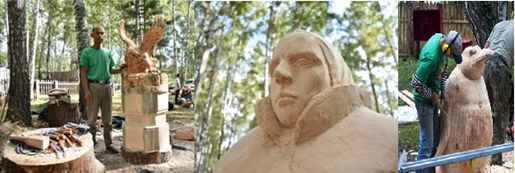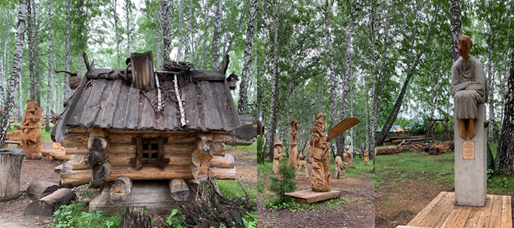The 4-th International Conference
Terahertz and Microwave Radiation:
Generation, Detection and Applications
TERA-2020 conference is devoted to the discussion of fundamental and applied problems related to the generation and detection of terahertz and microwave radiation as well as its interaction with matter.
Tomsk, Russia, August 24-26, 2020
Main topics of the conference
- Basic physics
- 1.1. THz Spectroscopy of gases
- 1.2. THz Spectroscopy of the solid-state
- 1.3. Ultrafast phenomena
- 1.4. High field THz generation and nonlinear physics
- 1.5. 2D materials
- Electronics
- 2.1. Electronic devices
- 2.2. Nano and quantum devices
- 2.3. MMW components and systems
- Optoelectronics
- 3.1. Laser-driven sources and detectors
- 3.2. Time-domain systems
3.3. QCL
- Materials
- 4.1. Materials properties
- 4.2. Metamaterials, plasmonics, and artificial materials
- Systems
- 5.1. Components
- 5.2. Near-field techniques and microscopy
- 5.3. Imaging and remote sensing: components and systems
- 5.4. Metrology
- Large facilities and high power equipment
- 6.1. Tubes, gyrotrons, amplifiers
- 6.2. FEL and synchrotrons
- 6.3. Plasma diagnostics and filamentation
- Applications
- 7.1. Industry
- 7.2. Defense and security
- 7.3. Biology and Medicine
- 7.4. Telecoms and radars
- Astronomy, Astrophysics and Atmospheric Science
- 8.1. Components and devices for mm-wave astronomy
- 8.2. IR &THz Monitoring the atmosphere, environment
Organizers & Commities
- Yury Kistenev, Tomsk State University
- Dmitry Khokhlov, Moscow State University, a Corresponding Member of Russian Academy of Sciences
- Alexander Shkurinov, the Institute of laser and information technologies of the Russian Academy of Sciences, a Corresponding Member of the Russian Academy of Sciences
- Michail Glyavin, the Institute of Applied Physics of Russian Academy of Sciences
- D. Khokhlov, Moscow State University, Moscow, Russia – Chairman
- A. Litvak, Institute of Applied Physics, RAS, Nizhny Novgorod, Russia
- G. Kulipanov, Budker Institute of Nuclear Physics, RAS, Novosibirsk, Russia
- B. Knyazev, Budker Institute of Nuclear Physics, RAS, Novosibirsk, Russia
- N. Vinokurov, Budker Institute of Nuclear Physics, RAS, Novosibirsk, Russia
- M. Kulygin, Institute of Applied Physics, RAS, Nizhny Novgorod, Russia
- V. Gavrilenko, Institute of Applied Physics, RAS, Nizhny Novgorod, Russia
- M. Glyavin, Institute of Applied Physics, RAS, Nizhny Novgorod, Russia
- V. Vaks, Institute for Physics of Microstructures, RAS, Nizhny Novgorod, Russia
- I. Ptashnik, Institute of Atmospheric Optics, SB RAS, Tomsk, Russia
- S. Nikitov, MIPT, Moscow, Russia
- S. Garnov, GPI RAS, Moscow, Russia
- P. Kopiev, Ioffe Institute of Physics and Technology RAS, St Petersburg, Russia
- O. Smolyanskaya, ITMO University, Moscow, Russia
- V. Tuchin, Saratov State University, Saratov, Russia
- K. Zaitsev, Scientific and Educational Center «Photonics and IR Technics», Moscow, Russia
- O. Cherkasova, Institute of Laser Physics SB RAS, Novosibirsk, Russia
- O. Minin, Tomsk State University, Tomsk, Russia
- I. Minin, Tomsk State University, Tomsk, Russia
- Xi-Cheng Zhang, Institute of Optics, University of Rochester, Rochester, USA
- Gian Piero Gallerano, ENEA, Rome, Italy
- Arnaud Cuisset, ULCO research center “Technological Changes & Environment”, Dunkerque, France
Organizing Committee:
- Chair — prof. Eduard Galazhinskiy, Tomsk State University, Rector
- Deputy chair — Alexander Vorozhtsov, Tomsk State University, Vice-Rector for Research and Innovation
- Deputy chair — prof. Yury Kistenev, Tomsk State University, Deputy vice –rector for research and innovation
- Deputy chair — prof. Oleg Romanovskiy, Institute of atmospheric optics of RAS, Deputy director
- Prof. Grigory Dunaevskiy, Tomsk State University
- Prof. Victor Cherepanov, Tomsk State University
- Prof. Valery Tuchin, Tomsk State University
- Prof. Igor Meglinski, Tomsk State University
- Prof. Irina Kurzina, Tomsk State University
- Dr. Semyon Yakovlev, V.E. Zuev Institute of Atmospheric Optics SB RAS
- Yury Babikov, V.E. Zuev Institute of Atmospheric Optics SB RAS
- Nadezhda Bastrikova, V.E. Zuev Institute of Atmospheric Optics SB RAS
- Irina Maslennikova, V.E. Zuev Institute of Atmospheric Optics SB RAS
Scientific Secretaries:
- Dr. Olga Kharchenko, V.E. Zuev Institute of Atmospheric Optics SB RAS
- Anastasia Knyazkova, Tomsk State University
Contacts: tera2020.tomsk@gmail.com
Sponsors
Please contact the organizing committee: tera2020.tomsk@gmail.com
Registration Fees
Participants from Russia:
| Registration Type | Early (before June 15, 2020) | Late (after June 15, 2020) |
| Regular | 6500 Roubles | 8125 Roubles |
| Young scientists (before 35 years) | 4975 Roubles | 6500 Roubles |
| Students and PhD students | 3250 Roubles | 4875 Roubles |
| Accompanying persons | 3250 Roubles | 4875 Roubles |
Participants from abroad:
| Registration Type | Early (before June 15, 2020) | Late (after June 15, 2020) |
| Regular | 100 EUR | 125 EUR |
| Young scientists (before 35 years) | 75 EUR | 100 EUR |
| Students and PhD students | 50 EUR | 75 EUR |
| Accompanying persons | 50 EUR | 75 EUR |
Participation as a listener – 25 EUR.
Participation in the exhibition – please contact the organizing committee: tera2020.tomsk@gmail.com
You are free to register an unlimited number of presentations per one person’s registration fee.
THE LINK TO THE CONFERENCE FEE PAYMENT SERVICE IS HERE (Login if necessary and find link «Pay registration fee / Check payment»)
Proceedings of SPIE publication
We invite you to publish full-text papers based on your presentations in a Volume of “Progress in Biomedical Optics and Imaging — Proceedings of SPIE”.
The Proc. of SPIE is indexed by Scopus, Ei Compendex, Inspec, International Aerospace Abstracts, Index to Scientific & Technical Proceedings, Physics Abstracts.
CiteScore 2018 is 0.51.
The cost of every paper preprocessing and publishing in the Proceedings of SPIE is 85 EURO.
THE LINK TO THE SPIE PUBLICATION PAYMENT SERVICE IS HERE (Login if necessary and find link «Pay registration fee / Check payment»)
The web-page for Proc. SPIE papers submission is HERE
The following SPIE requirements should be satisfied:
- A paper should be written based on the material of a report (oral or poster) presented at the Conference.
- Papers with similar titles are inadmissible. They will be rejected by a SPIE editor and deleted automatically from the SPIE website.
- The manuscript should be at least 4 pages in length under complete correspondence to the SPIE rules (type size, intervals, figures, tables, figure captions, references).
- Papers written in poor English are rejected.
- Papers with low-quality or Russian-language figures are rejected.
- Self-citing should not exceed 15%.
- Papers written by students are rejected. Students can be only co-authors of papers.
All papers will be checked for the fulfillment of these requirements.
Each paper is to be subjected to a double review.
Important Dates
- January 30, 2020 — Registration opens
- March 31, 2020 — Short abstract submission deadline
- June 15, 2020 — Early registration payment deadline
- August 1, 2020 — Deadline for submitting articles for publication in the Proceedings of SPIE
- August 24, 2020 — Opening ceremony
- August 26, 2020 — Closing ceremony
Visa
If you are going to apply for a Russian visa, please fill-up the questionnaire and send It with the scan of the first and second pages of your passport on a mail: visa.TERA2020@gmail.com
The Conference Venue
The conference sessions will be held on August 24-26, 2020 in the Research Library of Tomsk State University.
Accommodation
The organizers can recommend the following hotels located within walking distance from the conference venue:
BonApart
1а Gertsena street · Tomsk · 634029 · Russia
Reception (24/7): +7 (382) 253-46-55
E-mail: info@bon-apart.ru
http://www.bon-apart.ru/en

Sputnik
15 Belinskogo street · Tomsk · 634029 · Russia
Reception (24/7): +7 (382) 252-66-60
E-mail: admin@tomskturist.ru
http://sputnik.tomskturist.ru/en

Siberia
91 Lenin avenue · Tomsk · 634050 · Russia
Reception (24/7): +7 (382) 252-72-25
E-mail: hotel-sibir.tomsk@yandex.ru
http://hotel-sibir.tomsk.ru/en

Forum
91 Lenin avenue · Tomsk · 634050 · Russia
Reception (24/7): +7 (382) 253-02-80
E-mail: hotelforum@mail.ru
https://forum-otel.ru/en

Old Town
39 Frunze Avenue · Tomsk · 634029 · Russia
Reception (24/7) +7 (382) 248-33-88
E-mail: oldtown.tomsk@yandex.ru
https://oldtown.su

Oktyabrskaya
12 Karl Marx Street · Tomsk · 634009 · Russia
Reception: +7 (382) 251-21-51
E-mail: reception@tomsk.gov.ru
https://october.tomsk.gov.ru/site/eng/index.html

Tomsk State University (TSU)
TSU is the oldest university in the Russian Asia, in Siberia, that was founded in 1878 in Tomsk, Russia. It was the First Siberian Imperial University.
You can get some additional information about TSU here.
Official web-site http://en.tsu.ru
TSU History http://en.tsu.ru/about/history.php
How to get Tomsk State University
From the Tomsk airport – by bus 119 to the “University” stop, or Taxi (about 10 EUR)
From Railway station “Tomsk-1” by buses 2, 4, 442, 119 to the “University” stop or Taxi (about 4 EUR)
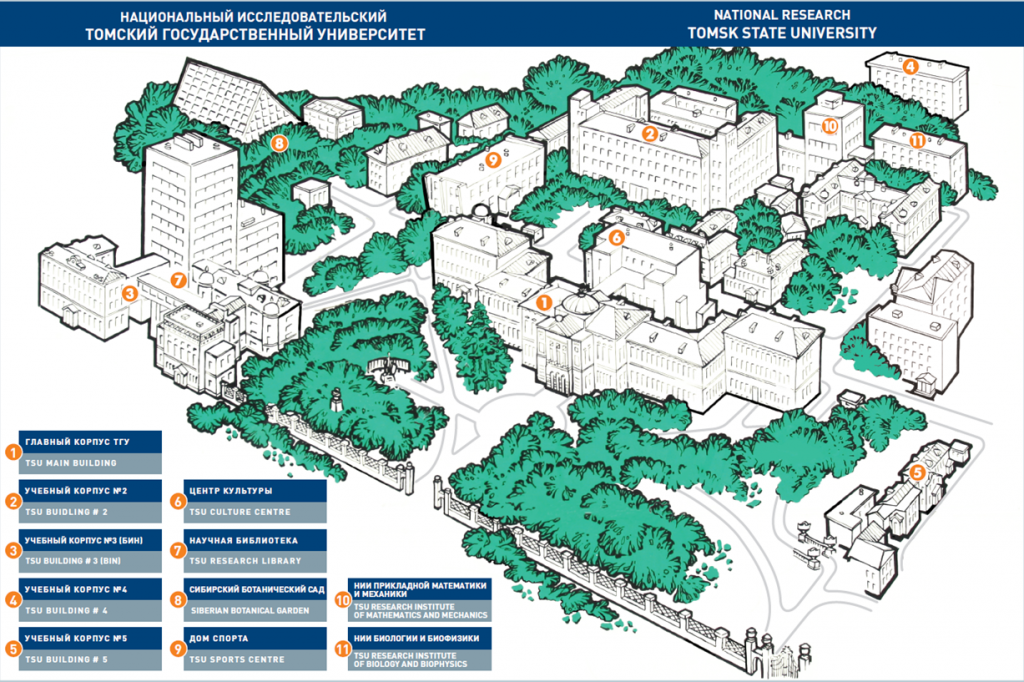
About Tomsk
Tomsk is the administrative centre of Tomsk Region, which is located in the Western Siberia on the right bank of Tom River. Tomsk was founded in 1604 under a decree from Boris Godunov. It served as an outpost for the land development and the affiliation with the other parts of Russia. Tomsk was a significant transport hub till the 19th century, when the Trans-Siberian railway was built closer to the south, so that slowed down the process of the development. During the sixties of the last century there was a development of the oil, military electronics and defense industries which moved the city to the new development level. Nowadays the area of the city is almost 300 square kilometers and the population is about 530 thousand people.
Tomsk is truly the city of students. There are more than 60 thousands students here. The first university in Siberia was founded in Tomsk in 1878, and Tomsk Polytechnic University which was founded in 1900 was also the first technical educational institution beyond the Urals. Today Tomsk has 6 institutions of higher education and 14 branches of the other cities institutions, also there is a musical college and the Orthodox seminary.
There’s no doubt that Tomsk is an important cultural centre. Not every city can impress its audience with six theatres. The Regional Drama theatre is the oldest one in Siberia, it was opened in 1850. At the present day it gives performances all over the country. Tomsk has many architectural memorials in the styles of Siberian baroque, classicism and modern. The oldest buildings are the religious ones: the Church of the Resurrection was built in 1622 of wood, and later it was rebuilt of stone in 1802; The Monastery of the Virgin and Saint Alexey which was founded in 1663 on the bank of river Ushaika.
In 1991 Tomsk was assigned a status of the historical city. Its preservation zone is about 950 hectares. Its historical-conservation area part still has a soleness of the 19th-the beginning of the 20th centuries’ urban landscape. The timber buildings with vintage woodcarving still impress the citizens and the guests of the city.
The 2004 was a 400 years old anniversary of the city. On the eve of 400 Birthday Tomsk became the intellectual, architectural and cultural capital of Siberia.
Nowadays Tomsk is the city which respects its historical traditions, and at the same time it’s the city of youth, where every citizen is a person with big future and a lot of students!
Social program
For persons who will arrive before August 24, 2020 we can organize a transfer to the International folk-crafts festival “Ax Day” (20 km from Tomsk). You will get a lot of ideas about traditional for Siberia skills of making woodworks, including houses without any nails.
During the conference, we will organize the excursions to the TSU museums, including the Siberian botanic garden, Museum of the history of physics, Rare book Museum, Museum of history, archeology and Ethnography of Siberia, Paleontological museum.
Also, we are planning excursion over Tomsk city.


